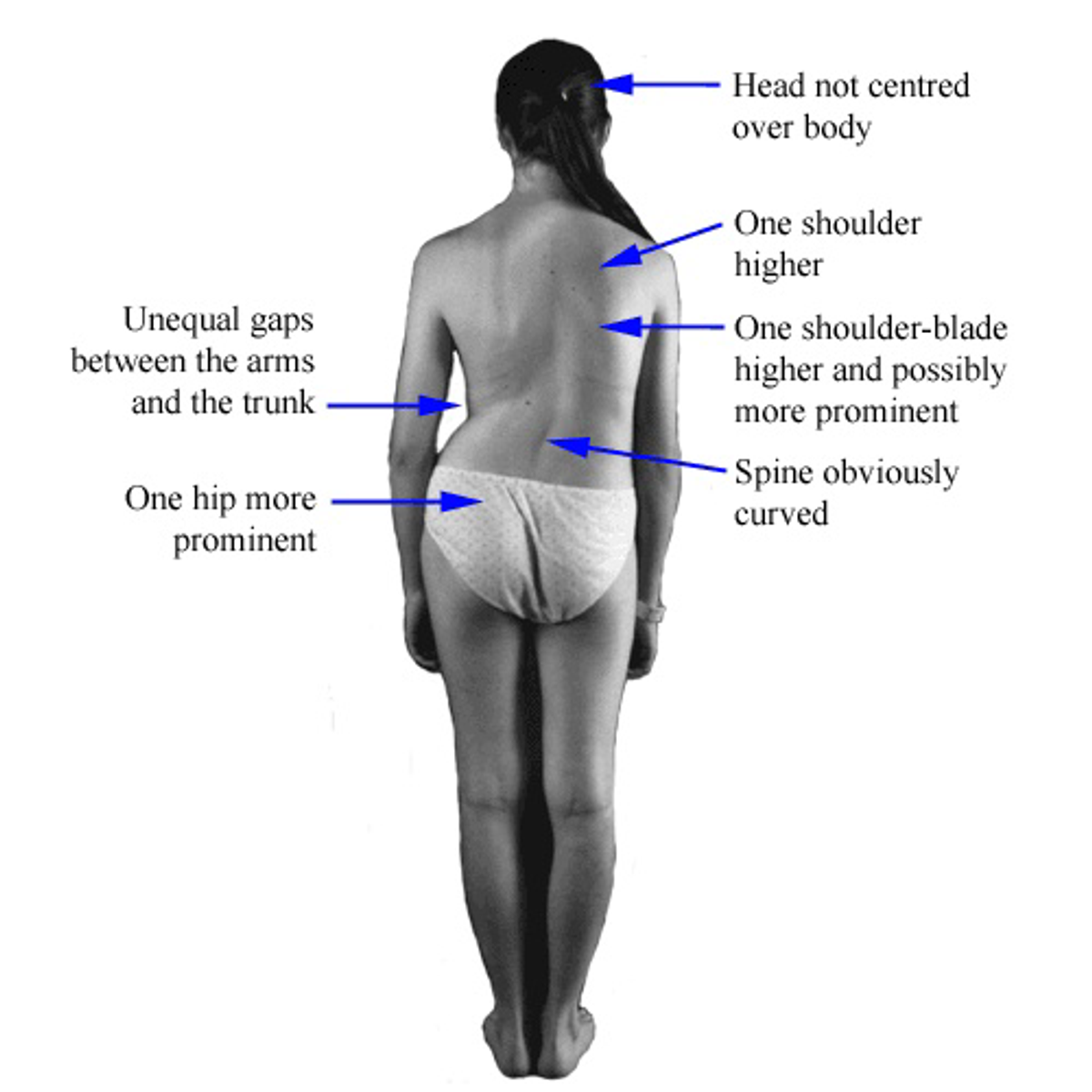
FROM THE SCHOOL NURSE
Mrs. Julia Lohmeyer
Adolescent Scoliosis - spinal curvature
WHAT IS SCOLIOSIS?
Scoliosis is when the spine forms a curved line instead of being straight.
Small curves usually don't cause problems. But a curve that gets worse can be bad for a person's health. Very large curves can damage the joints and cause arthritis of the spine. Large curves can make the ribs rub against the pelvis, causing pain. If the spine curves a lot, people might get lung problems.
The most common kind of scoliosis is usually found when young people, particularly girls, begin going through puberty.
Scoliosis which requires treatment is far less common in boys than in girls. The ratio of boys to girls requiring treatment is about 1 to 10.
WHAT IS THE CAUSE OF SCOLIOSIS?
The cause is unknown, with 80-90% of cases occurring in otherwise healthy adolescents.
We know that scoliosis is NOT contagious and NOT caused by bad posture, a soft mattress, carrying a heavy school bag or junk food.
WHY IS EARLY DETECTION IMPORTANT?
While very small curves of the spine are common and of no significance, about 2% of girls have a curve which warrants medical observation during the growth period. Three girls per 1,000 will require treatment during the growth phase. If treatment is required, the earlier it is undertaken, the better the long-term result.
This is why parents need to be aware of the issue as in the early stages scoliosis produces no symptoms.
THE WAY TO DETECT SCOLIOSIS IS TO LOOK FOR IT!
A QUICK CHECK FOR SCOLIOSIS
Apart from the outward signs with a teenager standing as illustrated, the reliable Forward Bend Test is used in the diagnosis of scoliosis. This simple visual examination requires the teenager to stand with the feet together and parallel and bending forward as far as she can go with the hands, palms facing each other, pointed between the two big toes. In scoliosis, one side of the upper chest region or the lower back region will be more than 1cm higher than the other. If the difference between the two sides is less than 1cm, it is highly unlikely that a significant curvature is present, and the difference is simply due to asymmetrical growth of the two sides of the body.
If after reading this information you think there may be a problem, please consult your family doctor.
Reference – www.scoliosis-australia.org
___________________________________________________________


